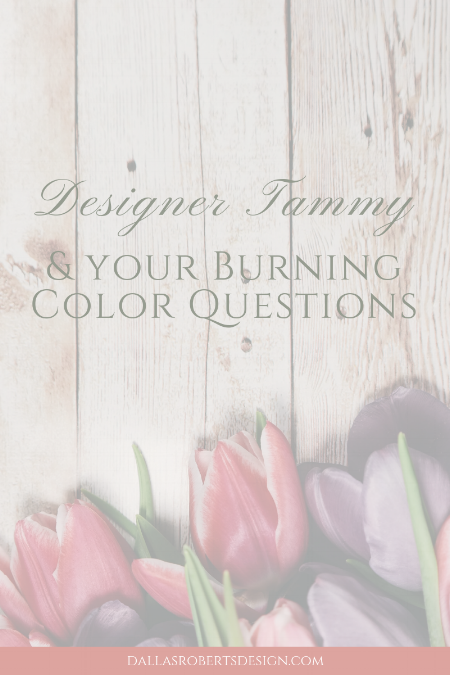We love color, but when a new client wants to incorporate it into their home, we hear many of the same questions and concerns. Where do I use it? What color looks best on my ceiling? How do I make a small room appear larger or brighter?
Read this Q&A with Tammy Vallar of Dallas Roberts Design for the answers to these questions and more...
Paint Color FAQs
FAQ: What’s the most common color mistake people make?
Too much of a good thing! I can’t tell you how many homes I’ve walked into where one color dominates the space, and not in a good way! This is where the 60-30-10 rule of color proportions comes in...
60%: Your primary color, usually dedicated to walls and large furniture.
30%: Your secondary color, often found in draperies, bedding, or accent furniture.
10%: Your accent color. These are your accessories, like pillows, lamps, and art.
What’s interesting is that your 10% accent color usually has the most impact in your space! It’s a great way to create balance, such as adding a warmer color to an otherwise cool palette, juxtaposing complementary colors like orange and blue, or adding a saturated color to an unsaturated palette.
Use your accent color to create harmony.
FAQ: What should I do if I’m afraid of color but still want to use it?
If you’re afraid to play with color, you’re probably more likely to stick with neutrals. That’s okay, because you can use your primary and secondary colors to play it safe while still experimenting with your accent color.
Also, remember that colors create emotion. Think about how you want your space to feel and go from there. Here’s a nice guide to exploring your own relationship with colors and their effect in your home.
FAQ: What color advice do you give to clients most often?
Paint a test spot on your walls! There’s nothing so infuriating (or mystifying) as buying white paint, covering all your walls with it, and then discovering… it’s actually baby blue in your space.
In other words, the sample swatches you find in stores can be VERY different from the color you’ll see in your space, and that color can change again from morning to night as light comes in from different angles.
Solution: Paint a test spot on your walls. Check on it at various times of the day. Be certain the color is what you want before committing to a weekend of paint rollers and shaky ladders.
In case you’re looking around, Seela’s Paint is one of my go-to paint suppliers.
FAQ: What’s the best color to make a room appear larger?
Blue! Light blues, especially. Cool colors give the walls the impression of receding, making a room feel larger and more open.
FAQ: When is it a good idea to paint the ceiling a different color from the walls?
If your ceiling is only 7-8 ft. high, you’ll want to use a color on it that’s lighter than the walls. This is a great way to create the illusion of it being higher, thus opening up the space!
FAQ: How do I use a paint color to make a dark space feel brighter?
In dark spaces, you should opt for warm but pale shades of paint, such as a pale yellow, cream, and rose. This is because warm shades are more reflective than their cooler counterparts. The color will throw more light around and make the space appear brighter.
FAQ: When should I hire a color consultant?
Getting a color consultation before designing your space is a low-cost investment with huge value — the first thing you notice about a room, consciously or subconsciously, is its color.
As I mentioned before, color is also the biggest contributor toward the emotion and feeling of a space, be it calming, rejuvenating, inspiring, etc. Without a practiced hand, it’s less easy to create the emotion you want. But it is worth it to have a space that feels exactly like home.
So if you’re really ready for a space with emotional impact, we think you should get a professional opinion — wherever you may find it. ;)
Need help with palette selection? Window treatments? Space planning? Dallas Roberts Design can help! Contact us here.




